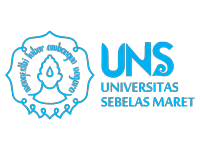Hubungan Pemberian ASI Eksklusif dan Susu Formula Terhadap pH Feses Bayi 0-6 Bulan
DOI:
https://doi.org/10.20961/plexus.v2i5.813Keywords:
ASI eksklusif, susu formula, pH Feses, bifidobacteriaAbstract
Pendahuluan: ASI merupakan asupan bayi yang paling praktis, murah, sempurna, dan higienis karena diminum langsung dari payudara ibu. Bayi yang mengonsumsi ASI, memiliki pH feses yang lebih asam daripada normal yaitu 4,5–5,5. Hilangnya Bifidobacteria dalam jumlah besar pada usus bayi dapat mengakibatkan peningkatan pH feses menjadi lebih basa dan memicu terjadinya dysbiosis mikrobiota usus. Selain faktor pemberian ASI eksklusif atau susu formula, penelitian ini juga meneliti faktor-faktor lain yang dinilai memengaruhi pH feses bayi. Penelitian ini bertujuan untuk mengetahui hubungan pemberian ASI eksklusif dan susu formula terhadap pH feses bayi 0–6 bulan.
Metode: Penelitian ini merupakan penelitian observasional analitik dengan pendekatan cross sectional. Pengambilan sampel dilakukan di Posyandu-posyandu dibawah kerja Puskesmas Ngoresan yang memenuhi kriteria peneltian sebanyak 50 sampel. Teknik sampling yang digunakan adalah simple random sampling. Data yang diperoleh akan dianalisis menggunakan uji Chi-square.
Hasil: Dari hasil analisis bivariat dengan uji Chi-square didapatkan hasil bahwa usia ibu (p=0.018) dan konsumsi ASI eksklusif atau susu formula (p=0.000) memiliki hubungan yang signifikan terhadap pH feses bayi.
Kesimpulan: Terdapat hubungan yang signifikan antara konsumsi ASI eksklusif atau susu formula terhadap pH feses bayi 0-6 bulan.
References
Akbaba TH, Balcı-Peynircioğlu B. (2018). Potential Impacts of Gut Microbiota On Immune System Related Diseases: Current Studies and Future Challenges. Acta Medica, 49(2), 31–37. Tersedia pada: https://actamedica.org/index.php/actamedica/article/view/286 (Diakses: 5 Oktober 2022)
Angkut C. (2020). Pendidikan Ibu Berhubungan Dengan Pemberian ASI Eksklusif. Jurnal Kebidanan Malahayati, 6(3), 357-360.
Badan Pusat Statistik. (2020). Statistik Indonesia 2020. Jakarta Pusat: Badan Pusat Statistik
Bowyer R, Jackson MA, Le Roy CI, Ni Lochlainn M, Spector TD, Dowd JB, Steves CJ. (2019). Socioeconomic Status and the Gut Microbiome: A Twins UK Cohort Study. Microorganisms, 7(1), 17. https://doi.org/10.3390/microorganisms7010017
Cong X, Henderson WA, Graf J, McGrath JM. (2015). Early Life Experience and Gut Microbiome. Adv. Neonatal. Care 15, 314–323. https://doi.org/10.1097/ANC.0000000000000191
Ferial. (2010). Hubungan Konsumsi ASI Terhadap pH Feses Bayi Usia 1 Bulan di Puskesmas Tanah Sareal Bogor. Islam Negeri Syarif Hidayatullah, pp: 35
Gao X, Zhang M, Xue J, Huang J, Zhuang R, Zhou X, Zhang H, Fu Q, Hao Y. (2018). Body Mass Index Differences in the Gut Microbiota Are Gender Specific. Frontiers in microbiology, 9, 1250. https://doi.org/10.3389/fmicb.2018.01250
Gomez-Gallego C, et al. (2016). The human milk microbiome and factors influencing its composition and activity. Seminars in Fetal & Neonatal Medicine. https://doi.org/10.1016/j.siny.2016.05.003
Guaraldi F, Salvatori G. (2012). Effect of breast and formula feeding on gut microbiota shaping in newborns. Frontiers in cellular and infection microbiology, 2, 94. https://doi.org/10.3389/fcimb.2012.00094
Henrick BM, Hutton AA, Palumbo MC, Casaburi G, Mitchell RD, Underwood MA, et al. (2018). Elevated Fecal pH Indicates a Profound Change in the Breastfed Infant Gut Microbiome Due to Reduction of Bifidobacterium over the Past Century. Msphere. https://doi.org/10.1128/msphere.00041-18.
Jena A, Montoya CA, Mullaney JA, Dilger RN, Young W, McNabb WC, et al. (2020). Gut-Brain Axis in the Early Postnatal Years of Life: A Developmental Perspective. Front. Integr. Neurosci. 14, 44. https://doi.org/10.3389/fnint.2020.00044
Kasırga E. (2019). The importance of stool tests in diagnosis and follow-up of gastrointestinal disorders in children. Turk Pediatri Ars; 54(3): 141–8. https://doi.org/10.14744/TurkPediatriArs.2018.00483
Laksono AD, Wulandari RD, Ibad M, et al. (2021) The effects of mother’s education on achieving exclusive breastfeeding in Indonesia. BMC Public Health, 21, 14. https://doi.org/10.1186/s12889-020-10018-7
Logor NT, Manoppo JIC, Tatura SNN. (2021). Gambaran Mikrobiota Usus dan Konsistensi Tinja pada Bayi Sehat Usia 0-6 Bulan yang Mendapat ASI dan Susu Formula. Jurnal Biometik, Vol 13, No 2. https://doi.org/10.35790/jbm.13.2.2021.31782
Lubis S, Suharti N. (2020). Hubungan Jumlah Koloni Bakteri Asam Laktat Air Susu Ibu dengan pH Feses Bayi pada Ibu Bersalin Normal dan Sectio Caesarea. Healthy Tadulako Journal (Jurnal Kesehatan Tadulako), 6(3), 86-95. https://doi.org/10.22487/HTJ.V6I3.156
Ma J, Li Z, Zhang W., et al. (2020). Comparison of gut microbiota in exclusively breast-fed and formula-fed babies: a study of 91 term infants. Sci Rep 10, 15792. https://doi.org/10.1038/s41598-020-72635-x
Miko E, Csaszar A, Bodis J, Kovacs K. (2022). The Maternal-Fetal Gut Microbiota Axis: Physiological Changes, Dietary Influence, and Modulation Possibilities. Life (Basel, Switzerland), 12(3), 424. https://doi.org/10.3390/life12030424
PR Newswire. (2020). Infant Fecal pH Revealed as a Critical Indicator of Infant Gut Health and Resistance against Gut Pathogen Invasion. Tersedia pada: https://www.prnewswire.com/news-releases/infant-fecal-ph-revealed-as-a-critical-indicator-of-infant-gut-health-and-resistance-against-gut-pathogen-invasion-301038265.html (Diakses: 6 Maret 2022)
Ramirez J, Guarner F, Bustos Fernandez L, Maruy A, Sdepanian VL, Cohen H. (2020). Antibiotics as Major Disruptors of Gut Microbiota. Frontiers in cellular and infection microbiology, 10, 572912. https://doi.org/10.3389/fcimb.2020.572912
Shah NP. (2011). Bacteria, Beneficial: Bifidobacterium spp.: Morphology and Physiology. Encyclopedia of Dairy Sciences. https://doi.org/10.1016/B978-0-12-374407-4.00043-1
Van Nostrand SM, Bennett LN, Coraglio VJ, Guo R, Muraskas JK. (2015). Factors Influencing Independent Oral Feeding in Preterm Infants. J. Neonatal. Perinatal. Med. 8, 15–21. https://doi.org/10.3233/NPM-15814045
Vandenplas Y, Carnielli VP, Ksiazyk J, Luna MS, Migacheva N, Mosselmans JM, Wabitsch M. (2020). Factors affecting early-life intestinal microbiota development. Nutrition, 110812. https://doi.org/10.1016/j.nut.2020.110812
Wang Y, Chen X, Yu Y, Liu Y, Zhang Q, Bai J. (2020). Association between Gut Microbiota and Infant's Temperament in the First Year of Life in a Chinese Birth Cohort. Microorganisms, 8(5), 753. doi: 10.3390/ microorganisms8050753
Yusrina A, Devy SR. (2016). Faktor yang mempengaruhi niat ibu memberikan asi eksklusif di Kelurahan Magersari, Sidoarjo. Jurnal Promkes: The Indonesian Journal of Health Promotion and Health Education, 4(1), 11-21. https://doi.org/10.20473/jpk.V4.I1.2016.11-21
Downloads
Published
Issue
Section
License
Copyright (c) 2023 Aqillah Azzah, Evi Rokhayati, Husnia Auliyatul Umma

This work is licensed under a Creative Commons Attribution 4.0 International License.
Copyright @2022. This is an open-access article distributed under the terms of the Creative Commons Attribution 4.0 International License (https://creativecommons.org/licenses/by/4.0/).



